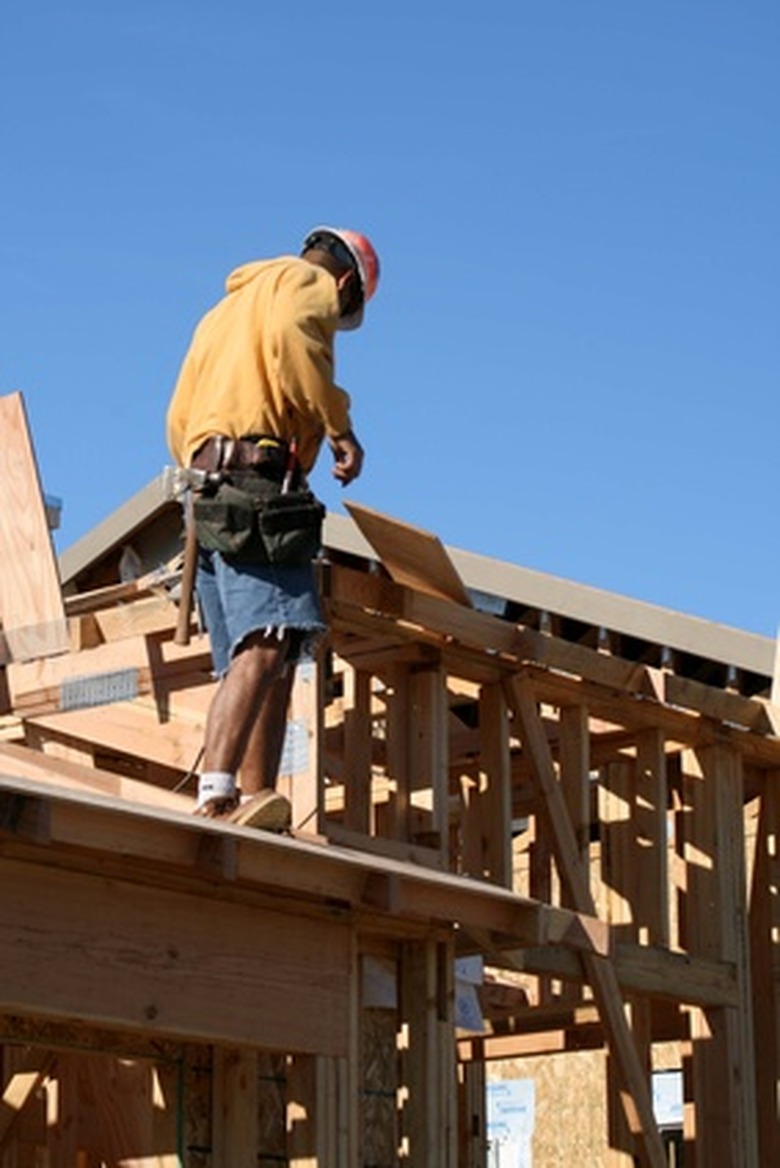Fungicide To Treat Blue Mold In Pine Trees
There are no effective fungicides to kill the yeast-like blue stain fungus, Grosmannia clavigera, a parasite of the mountain pine beetle. The only way to control blue stain fungi, a species of sac fungi and not a mold, is to suppress the host pine beetle. This is not an easy challenge; since a fungicide is not option, the first step toward eliminating the fungus is to understand the relationship between the fungus, the beetle and the pine tree.
Symbiotic Relationship
The blue stain fungus infects part of the mouth of the larvae of the pine bark beetle as it feeds on the edges of its pupal chambers. When the adult beetle flies off to feed on a new tree, it spreads fungal spores into the tree. The spores find their way into the phloem, the tube-like vessels that that bring moisture and nutrients up from the roots. The spores blocks these tubes, disrupting the tree's ability to produce "pitch" or sap to fight off the beetles. The relationship of fungus and bark is thus symbiotic. The beetle carries the fungus from tree to tree. The fungus prevents the tree from fighting the beetle.
- There are no effective fungicides to kill the yeast-like blue stain fungus, Grosmannia clavigera, a parasite of the mountain pine beetle.
- The only way to control blue stain fungi, a species of sac fungi and not a mold, is to suppress the host pine beetle.
Symptoms
Unlike mold fungi, blue stain penetrates deep into the wood. Although it sometimes appears gray or black, the stain is usually blue. Because the fungus penetrates deep into the tree, cut lumber is blue all the way through. Blue stain fungi cannot be smeared or rubbed off as molds can be.
Stained Lumber
Drying cut lumber to 19 percent moisture and keeping it dry will kill the fungus, although the bluish stain will remain. Blue stain fungus does not weaken lumber. Stained lumber can still be used for framing and construction, and it can be painted.
- Unlike mold fungi, blue stain penetrates deep into the wood.
- Drying cut lumber to 19 percent moisture and keeping it dry will kill the fungus, although the bluish stain will remain.
Pine Bark Beetles
Mountain pine bark beetles, Dendroctonus ponderosae, have hard-black bodies about the size of a grain of rice. They are attracted to lodgepole, ponderosa, limber and Scotch pine, although they will attack bristle cone and pinyon pine as well. They attack trees that are under stress from fire damage, overcrowding, root disease, injury and old age. In addition to introducing blue stain fungus into the tree, they form masses of brown, pink or white resin in the shape of popcorn called "pitch tubes" where they begin tunneling. They leave boring dust on the bark where they feed and on the ground by the trunk of the tree.
Control
Stands of pine trees should be thinned, leaving healthy, well-spaced trees. Remove and destroy infected bark and trees. There are no chemical treatments for a tree once it is infected. Horticulturists at Colorado State University recommend preventative spraying of living green trees in the early summer to prevent beetles from attacking a tree. Pesticides containing the active ingredients bifenthrin, carbaryl and permethrin are registered by the EPA for this use. The preventative spray is usually effective for one year. The U.S. Forest Service says that biopesticides containing the active ingredient chitosan, a plant growth enhancer, appears to increase the resin that pine trees need to defend themselves against the pine bark beetle. No pine bark beetles, no blue stain fungus.
- Mountain pine bark beetles, Dendroctonus ponderosae, have hard-black bodies about the size of a grain of rice.
- Horticulturists at Colorado State University recommend preventative spraying of living green trees in the early summer to prevent beetles from attacking a tree.
